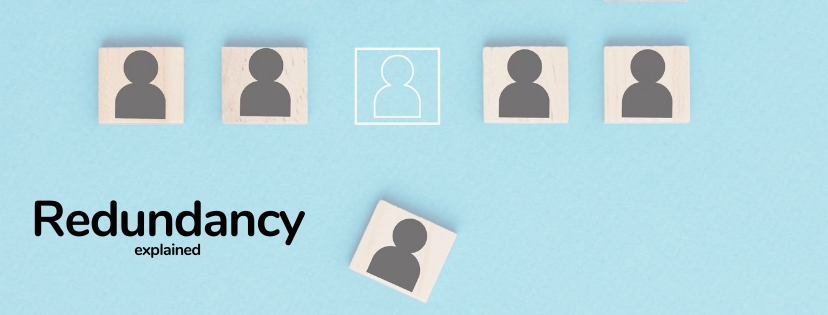Your Rights to Redundancy If Company Goes Bust: UK Employee Protections
Your Rights to Redundancy If Company Goes Bust: UK Employee Protections
Blog Article
Investigating the Interplay In Between Company Redundancy and Business Adaptability for Future Development
In the dynamic landscape of today's organization world, the elaborate connection between business redundancy and business flexibility arises as a crucial aspect for sustained growth and success. Companies frequently deal with the difficulty of striking a fragile equilibrium in between keeping a degree of redundancy to reduce threats and cultivating flexibility to react promptly to the ever-evolving market needs.
Relevance of Company Redundancy
Company redundancy is a crucial element that improves business strength and minimizes functional dangers. By integrating redundancy procedures within the business framework, companies can better endure unanticipated interruptions and variations in the organization setting. Redundancy functions as a tactical buffer, allowing business to adapt and respond efficiently to unforeseen obstacles without jeopardizing important operations.
One trick element of the significance of business redundancy is its role in making sure continuity throughout times of dilemma. When faced with abrupt modifications or emergencies, repetitive systems, resources, or personnel can step in to keep important functions and protect against extensive disruptions. This connection not only safeguards the firm's track record and client count on but additionally lessens financial losses and functional downtime.

Techniques for Organizational Versatility

Another essential method is spending in technology and infrastructure that can support flexibility and scalability. Executing digital tools, automation, and data analytics can improve operations, improve efficiency, and offer important insights for notified decision-making. Furthermore, producing adaptable organizational structures that allow for quick changes to market characteristics and consumer demands is necessary for remaining competitive in a quickly developing environment. By proactively identifying potential disturbances and possibilities, companies can proactively adapt and flourish in an ever-changing organization landscape.
Harmonizing Redundancy and Adaptability
Accomplishing an unified stability in between operational redundancy and business versatility is paramount in browsing the complexities of a vibrant business environment. Redundancy within a firm gives a safety internet, guaranteeing connection and stability in procedures. However, an unwanted of redundancy can lead to inadequacies and prevent versatility to transforming market conditions. On the other hand, organizational flexibility allows companies to react quickly to exterior disruptions and take brand-new chances. Striking the appropriate balance in between redundancy and versatility is a delicate procedure that requires a deep understanding of the company's objectives, industry dynamics, and threat resistance.
To achieve this balance, companies need to conduct regular evaluations of their procedures to determine areas where redundancy is required for danger mitigation and where adaptability can drive innovation and growth. Implementing adaptable frameworks, cultivating a society of continual learning and renovation, and encouraging open interaction across all levels of the organization are vital approaches to balance redundancy and versatility efficiently. By aligning these 2 essential components, business can position themselves for lasting growth and success in an ever-changing business landscape.
Case Researches on Adjustment Success
In taking a look at instances of effective organizational adaptation, it comes to be noticeable that the interplay between functional redundancy and versatility is a specifying consider forming resilient organizations. One engaging case research is that of Netflix. At first a DVD rental service, Netflix showed exceptional adaptability by transitioning right into a streaming platform when digitalization interrupted the industry. By tactically investing in modern technology and content production, Netflix not only flourished yet made it through in a swiftly progressing market. Another standout example is Amazon. Beginning as an online book shop, Amazon continuously adapted its organization design, increasing into diverse fields such as cloud computing and expert system. This versatility permitted Amazon to stay ahead of rivals and meet changing consumer demands. Last but not least, Adobe provides a notable image of effective adaptation. The business changed from selling software application licenses to a subscription-based version, ensuring repeating profits streams and boosted customer interaction. These case studies highlight the value of functional redundancy coupled with organizational versatility in promoting lasting development and competition.
Structure Resilience for Future Development
Structure resilience for future development calls for a tactical placement of functional procedures with market characteristics and arising patterns. Companies must adjust to transforming atmospheres by promoting a culture of flexibility, technology, and continual enhancement. Resilience entails not just recovering from setbacks but additionally proactively getting ready for future challenges. One vital facet of building strength is spending in robust threat administration techniques to mitigate prospective disturbances. This consists of circumstance preparation, diversifying supply chains, and creating contingency prepare for different contingencies (who pays redundancy money).
Furthermore, fostering solid relationships with stakeholders, such as clients, staff members, providers, and the area, is vital for keeping and weathering uncertainties count on and assistance during rough times. Reliable interaction and transparency play a crucial duty in building durability, as they assist promote and align expectations partnership in browsing unpredictabilities.
Furthermore, organizations require to focus on understanding and development efforts to upskill employees and equip them with the required devices to adjust to transforming scenarios. By purchasing their workforce, business can improve their versatility and dexterity, inevitably enhancing their strength for sustainable future development.
Verdict

In the dynamic landscape of today's organization world, the detailed relationship between firm redundancy and organizational adaptability arises as a crucial element for continual development and success. Companies typically encounter the challenge of striking a delicate balance in between keeping a degree of redundancy to reduce dangers and cultivating flexibility to respond swiftly to the ever-evolving market needs.To attain this equilibrium, firms need to conduct routine analyses of their procedures to recognize areas where redundancy is needed for threat reduction and where flexibility can drive innovation and growth.In conclusion, the interplay between business redundancy and business versatility is important for future growth. Building durability with a mix of redundancy and versatility will make sure that business are prepared for the difficulties of the future.
Report this page